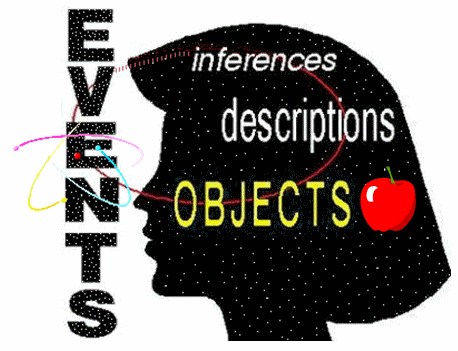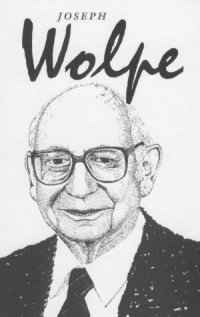
Methods of Learning and Unlearning
This article was written by Steven Lewis in 1989 and printed in the General Semantics Bulletin #55 (1990) under the title "The Implications of Joseph Wolpe's Work for General Semantics."
Alfred Korzybski linked the good (science and math) and the bad (insanity) of human evaluation in a theory he called General Semantics. Not content merely to describe the extremes of human evaluation, Korzybski produced a training program to help us weed out our "unsane" habits of evaluation. These training aids or "extensional devices" help us develop the increased flexibility we need to cope with a world that changes more rapidly each year.
 The work of Korzybski continues to be relevant despite the avalanche of data and theories produced by scientists since his death. These data and theories, however, do allow us to elaborate on issues that Korzybski could only speak about vaguely. In particular, the work of psychologist Joseph Wolpe (1915-1997) both clarifies and extends that of Korzybski's even though to my knowledge Wolpe is not familiar with General Semantics.
The work of Korzybski continues to be relevant despite the avalanche of data and theories produced by scientists since his death. These data and theories, however, do allow us to elaborate on issues that Korzybski could only speak about vaguely. In particular, the work of psychologist Joseph Wolpe (1915-1997) both clarifies and extends that of Korzybski's even though to my knowledge Wolpe is not familiar with General Semantics.
Korzybski often expressed his belief that the mechanism was present in us for involuntary learned reactions to be put under voluntary control. However, long-established fear responses have such low thresholds for activation that they may seem beyond our best conscious efforts to control. Traditional General Semantics techniques are helpful in preventing the development of these reactions but after they have been established they may require additional techniques to diminish. Wolpe developed extensional techniques that are particularly useful in harnessing these difficult reactions.
Wolpe has found that animal and human reactions that seem hopelessly beyond control can be weakened if a competitive reaction can be evoked when ordinarily the unwanted one would occur. In one of his earliest experiments, Wolpe placed cats in cages and shocked them repeatedly until the cats developed a pronounced anxiety response to the cages. Thereafter, the cats became anxious when they were placed in these cages or in any environment that resembled the cages. These anxiety reactions persisted even though the cats received no further shocks.

Wolpe found that the amount of anxiety evoked in the cats varied with the familiarity of an environment to the cage in which the shocks had occurred. He exploited this variability of response and successfully abolished the anxiety reactions of these cats.
First he placed the cats in an environment that evoked only a small amount of anxiety. Food was placed with the cats and, when the cats got sufficiently hungry, they ate. The act of eating apparently diminished their anxiety response. Soon the cats could be placed in environments more resembling the cages and, eventually, in the original cages without symptoms of anxiety.
Wolpe calls this procedure systematic desensitization. It has been found to be remarkably effective at rooting out all sorts of deep-set reactions in animals and humans. The success of this tool led Wolpe to develop a theory of learning called reciprocal inhibition.
Reciprocal behaviors are reactions that compete with each other. If a reciprocal reaction can be evoked in a situation that usually elicits a different response, the old reaction can be weakened. Learning occurs as the new response grows stronger and the old response grows weaker. The act of eating can elicit reactions in animals that compete with and diminish the anxiety response. In humans, eating usually does not have this effect, but other behaviors do. Neuromuscular relaxation is reciprocal to anxiety, assertiveness is reciprocal to shyness and positive thoughts are contradictory to negative thoughts. These reciprocal reactions will weaken their less desirable counterparts only if they can be evoked under conditions that would normally elicit the older reactions.
Korzybski often complained of students who verbally approved his work but did not apply it. Wolpe's theory of reciprocal inhibition illuminates the problem. Students may do well in a course but show few lasting signs outside of class that they have mastered the material; likewise, one may read and approve of a book while continuing to behave otherwise. A course or a book contains alternative sets of reactions. If these reactions are not practiced in contexts where they can compete with already established reactions they will not displace them. The real life application of what has been learned verbally will be lacking.
Wolpe's theory of learning by reciprocal inhibition also provides an explanation of the placebo effect, including the "success" of most psychotherapies. Korzybski noted in Science and Sanity that only about half the patients who undergo psychotherapy show any improvement (p359). These limited successes are, nevertheless, often cited as "proof" of the value of a specific therapy. Wolpe, meanwhile, states that the 50 percent success rate common to many psychotherapies indicates that what is unique about each technique is probably not responsible for the improvement. He suggests, instead, that the positive feelings evoked by the patient-client interaction reciprocally inhibit the negative responses of the patient. Any therapeutic technique that claims to be superior to other methods must demonstrate a success rate higher than 50 percent. Wolpe cites such data for his behavior therapy tools in his book Life without Fear.
"Alone among the systems of psychotherapy, behavior therapy yields a percentage of recoveries significantly above the baseline: 80 to 90 percent of patients are either apparently cured or much improved after an average of twenty-five to thirty sessions." (p114)
Wolpe's standard procedure for re-educating patients who suffer from anxiety reactions includes training them in the scientific relaxation techniques of Edmund Jacobson (1888-1983) while he develops a hierarchy of anxiety-evoking situations. The relaxed patient is then exposed to weak anxiety-evoking stimuli until he feels completely comfortable in the situation. The patient advances to the next level until it, too, has been mastered and, finally, to the situation that would normally evoke the most anxiety.
The systematic aspect of his desensitization technique is critical to Wolpe's success. Sink-or-swim methods like flooding are less successful and much more stressful. Moreover, sink-or-swim methods may make the symptoms worse.
It is not always practical for an individual to be desensitized by confronting real situations. Real-life hierarchies can be inconvenient to arrange and difficult to control. Fortunately, Wolpe has found that it is not always necessary for the individual to confront real situations in order to change behavior in these situations. Individuals who have vivid imaginations and who respond to images of a situation in the same way they respond to the situation itself can be re-educated at home or in the office. It is still important, though, that the individual not imagine situations that are too intense; to do so would risk eliciting and reinforcing the old reactions instead of the new. Instead, a hierarchy of imaginary situations must be developed so that the individual can effectively evoke the beneficial reactions at each level.
The great success of Wolpe's techniques in a clinical setting, particularly his use of covert behavior (visualization ...) to change overt behavior, suggests they would be valuable general preventative tools in helping us avoid the many nuisance reactions that plague our lives. We may have a tendency to relive covertly the bad events in our lives and, consequently, reinforce undesirable reactions to those events. These reactions may generalize and sour our attitude on life and may even lead to verbal and physical violence. Instead, we could practice 'thought-switching' techniques and reciprocally inhibit these reactions. In this light the extensional tools developed by Korzybski (indexes, dates, hyphens ...) can be seen as desirable `thought' reactions for reciprocally inhibiting less desirable `thought' reactions. If we differentiate we cannot identify.
In summary, Wolpe has developed new extensional techniques that we can add to our General Semantics tool chest to be used to bring about increased flexibility in our reactions. He has clarified how learning takes place so that we may learn more effectively. The tools developed by Wolpe and his colleagues, like the principles of General Semantics, may seem obvious once stated and, in fact, have been applied in a rough and ready fashion for centuries. Once formally stated, however, they can be rigorously applied, tested and improved.
BIBLIOGRAPHY
Go to General Semantics Home Page ||| Go to Steven Lewis Home Page